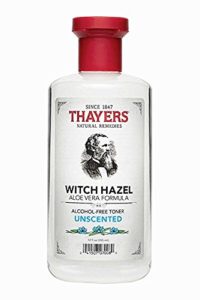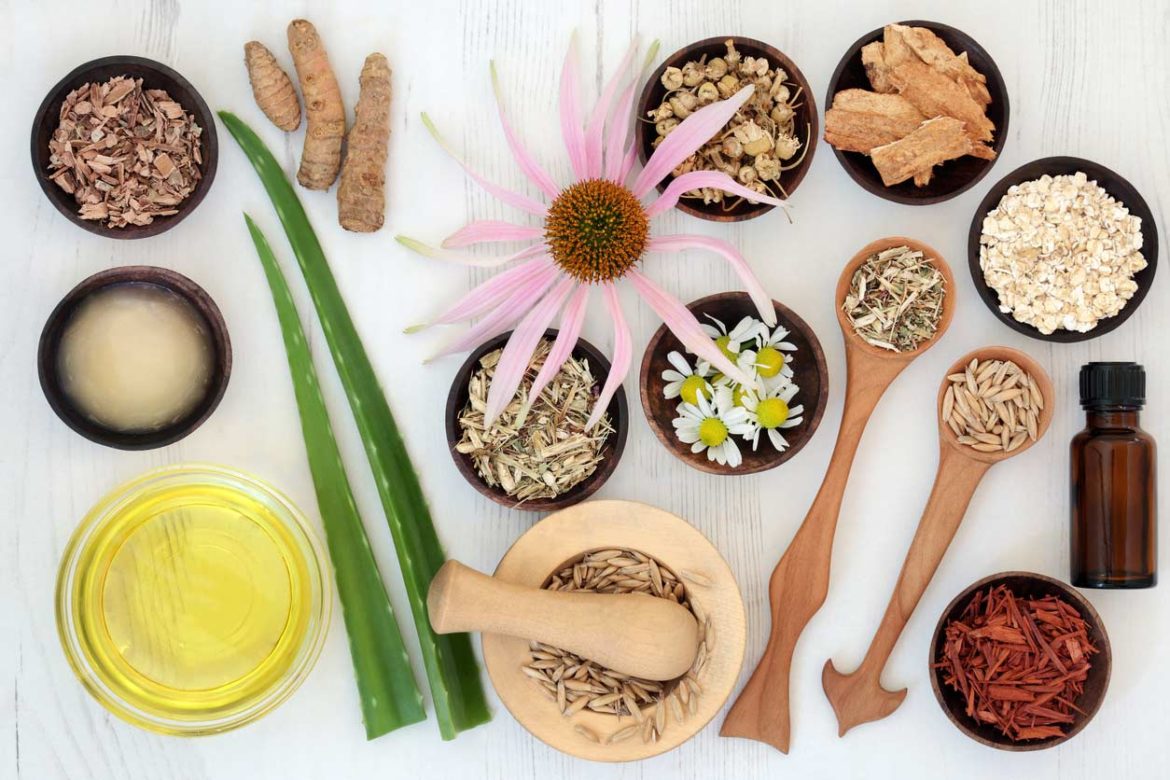While acne most commonly affects teenagers, there are plenty of adults who suffer from acne-prone skin, too. Whether you’ve had acne your whole life or it reappeared in your 30s or 40s, there are a lot of ways to treat it. As anyone who is acne prone will testify, some medicinal methods can be very harsh and cause added problems. There are many inexpensive to very expensive products out there to help tackle skin irritations and help reduce acne and scars, such as aloe vera, tea tree oil, coconut oil, and apple cider vinegar. Luckily, one of the best ways to treat acne is all natural and affordable. We’re talking about witch hazel for acne!
What Causes Acne?
To understand acne and acne-prone skin, you have to know a little about the anatomy of your skin. Skin is covered in pores that connect to oil glands under the surface. Pores and oil glands are connected by a follicle that typically contains a hair.
Oil glands produce sebum, an oily liquid that carries dead skin cells through the follicles and to the surface of the skin. When pores or follicles get blocked, sebum and dead skin cells can’t move through the pore. This causes swelling which is easily infected by bacteria living naturally on the surface of the skin which is what we refer to as a pimple.
There is a difference between a pimple and acne. Acne is multiple breakouts that are  persistent and spread across large areas of the skin. While it most commonly affects the face, it can also occur on the shoulders and back.
persistent and spread across large areas of the skin. While it most commonly affects the face, it can also occur on the shoulders and back.
What Is Witch Hazel?
Witch hazel is a North American plant. The bark and leaves are used to make an astringent that can treat a lot of different things, including insect bites, poison ivy, and general inflammation. One of the most popular uses for witch hazel extract is treating acne. Why? Because it’s a strong astringent that kills the bacteria living on the skin and removes excess oil, two of the main causes of acne.
What’s the Best Way to Use Witch Hazel to Treat Acne?
One of the great things about witch hazel is there are several different ways to use it.
The easiest way to use witch hazel for acne treatment is to buy a bottle of pure alcohol-free witch hazel extract and apply it directly to the skin. Use a cotton ball and dab it onto the affected skin twice a day after washing your face. If you have particularly oily skin, you can up it to three times daily. Don’t use it more than that as it can quickly dry your skin out too much and cause additional problems.

In its natural state, the properties of witch hazel have a mild, natural smell that can be difficult to describe. It’s been described as clean, woody, papery, and herbal. If you prefer a toner that has a more pleasing scent, you can easily make your own. Just add a few drops of lavender oil to one cup of witch hazel, add a tablespoon or so of dried lavender, and mix. It’s best to make this toner in small batches like this to avoid spoiling. Store in an airtight glass jar and apply to your face with a cotton ball two or three times a day. After using any witch hazel toner, be sure to apply an oil-free moisturizer.
Alcohol-free witch hazel can also be used to make a face mask. There are a few varieties that you can make using things you probably already have in your kitchen. The easiest recipe is to mix one-part witch hazel with two-parts honey. You can even add mashed avocado, egg whites, or a few drops of essential oil to thicken the mask and add a fruity smell. The great thing about this mask is that while witch hazel has antibacterial and anti-inflammatory properties, the honey and extra ingredients moisturize and condition your skin at the same time.
If you can get your hands on a witch hazel plant, you can make your own decoction. Because this is a watered-down recipe, it’s gentler and has less risk of drying out your skin. Place the bark in a stainless steel pot and cover it with distilled water. Cover the pot and bring it to a boil. Reduce the heat and allow it to simmer for 30 minutes. Remove the pot from heat and allow it to cool before straining it into an airtight glass jar. The decoction has to be kept in the refrigerator and discarded after a week so that it doesn’t spoil. Apply it with a cotton ball as you would a toner. The great thing about this method is that the cool temperature is also really soothing on irritated skin.
There are a lot of over-the-counter products that incorporate witch hazel as well. If you want or stick with something completely natural, you may want to avoid them. That said if you want something that smells good or that has additional ingredients that can help heal and tone your skin, an oil-free, alcohol-free product that contains witch hazel might be just what you’re looking for.
Side Effects
Witch hazel is safe when used topically. There are only two things to be careful of, irritation and allergic reactions.
When using witch hazel as a toner, two times a day is ideal. If you have really oily skin, you can push it to three occasionally but make sure not to over-dry your skin. Don’t start your skincare routine by applying it three times every day. It’s best to do it twice a day and add an extra application in as needed. Always apply a light oil-free moisturizer after the toner to keep your skin moisturized.
We should also note that some people do have an allergy to witch hazel, whether it’s from natural causes or brought on by overuse. This can obviously be very bad for your already sensitive skin. Look out for signs of an allergic reaction, specifically rashes, redness, or itching. If you do have any of these problems, stop using witch hazel and see if these things clear up. If they do, it’s likely you are allergic and should stop using it.

